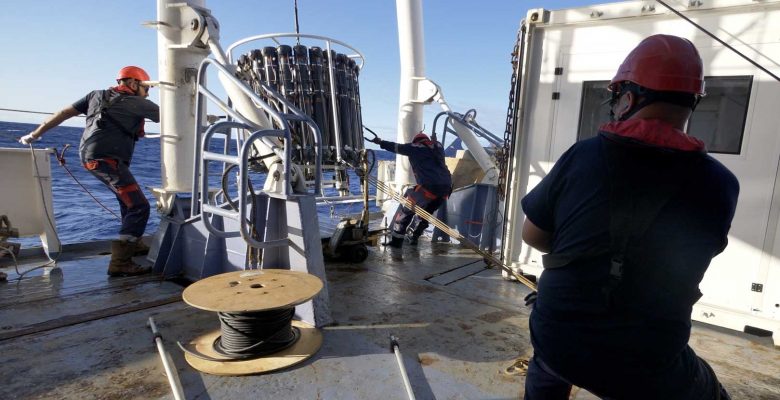A major discovery has just been made in the South Pacific. An international team of 25 researchers, led by the French National Research Institute for Sustainable Development (IRD) via the Mediterranean Institute of Oceanography (MIO) and the CNRS, has just discovered that this region, once considered a biological desert, is in fact a veritable oasis of marine life, playing a vital role in the capture of carbon dioxide and in balancing our planet’s climate.
Par Laurie Henry
Natural fertilisation in the middle of the desert and an oasis of life
The South Pacific Marine Desert, a vast expanse of water stretching from Australia to South America, is one of the least explored regions of the world’s oceans. Because of its low biological productivity, it has long been neglected by scientists. But a new study reveals that this area actually plays a crucial role in the absorption of atmospheric CO2.
The “TONGA” scientific mission was led in 2019 by two French researchers, Sophie Bonnet (oceanographer at the IRD) and Cécile Guieu (oceanographer at the CNRS). Aboard the research vessel Atalante, chartered by the French Oceanographic Fleet, the oceanographic campaign explored shallow submarine volcanoes in the Tonga region of the Pacific.
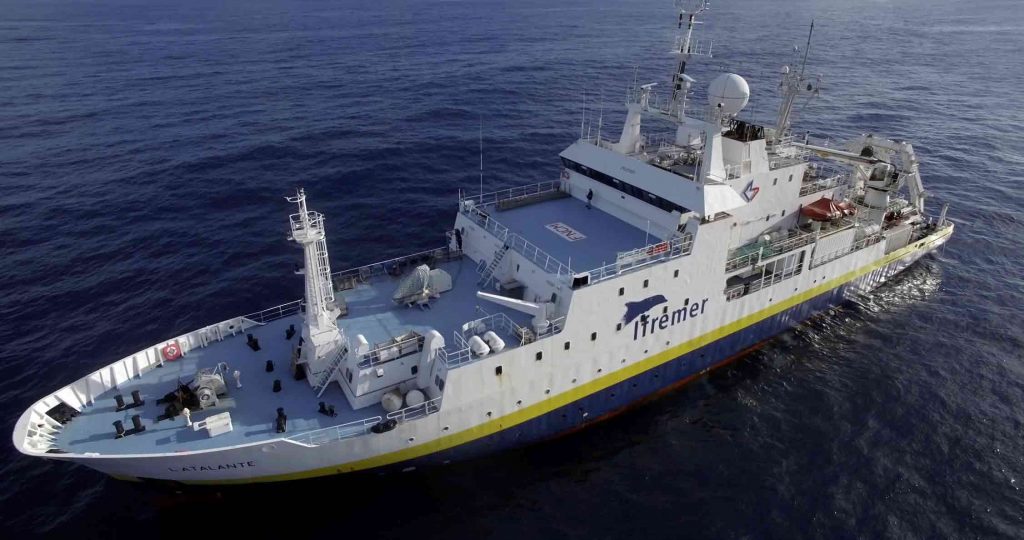
The oceanographic vessel Atalante sailing in the Pacific towards research sites as part of the TONGA oceanographic campaign.
Using a wide range of physical, acoustic, chemical and biological observations and measurements, the authors revealed that these volcanoes emit hydrothermal fluids rich in trace elements, minerals present in very small quantities such as iron.
Often present in limited quantities in the ocean, iron is an essential nutrient for life and phytoplankton. So when these underwater volcanoes emit large quantities of iron, which itself reaches the light layer of the ocean, biological activity is strongly stimulated, which explains this oasis of life in the middle of the South Pacific ‘desert’. In particular, marine micro-organisms known as “diazotrophs” are naturally nourished by this iron and, through photosynthesis, fix CO2 in large quantities.
What follows is a vast efflorescence or bloom, in other words a rapid and abundant growth of these micro-organisms over an area estimated to be around 400,000 km2. A veritable oasis of life develops in this region, playing a key role in the increased sequestration of CO2 feeding the oceanic carbon sink.
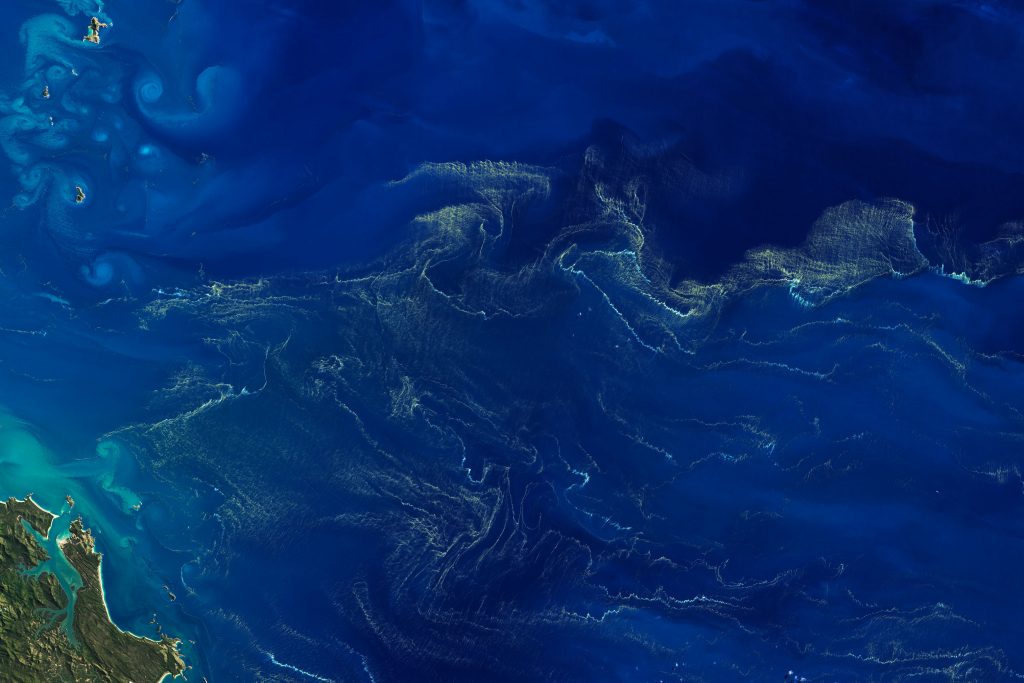
Phytoplankton bloom of the nitrogen-fixing cyanobacterium Trichodesmium in the south-west Pacific.© Tonga Project / G. Roudaut et S. Bonnet
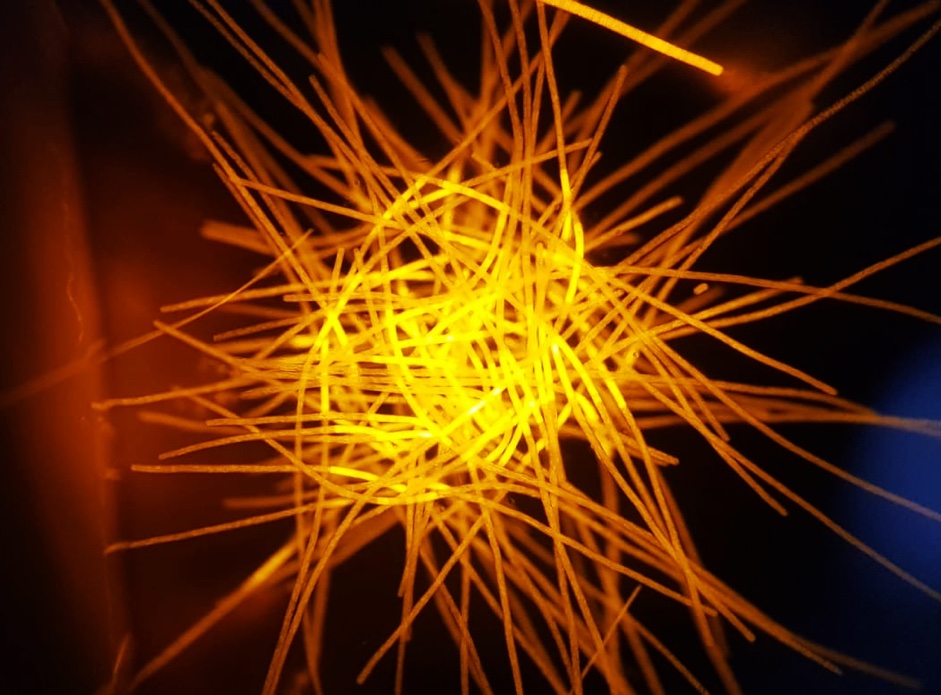
Observed by microscopy, it uses nitrogen in its molecular form thanks to the large quantities of iron available in the environment. © Tonga Project / G. Roudaut et S. Bonnet
A gigantic CO2 sink in the middle of the desert raises questions about the consequences of climate change
Despite these encouraging results, the researchers warn against being too optimistic. Although the South Pacific marine desert is a major CO2 sink, it will never be able to compensate for man-made CO2 emissions on its own. Above all, global warming itself could disrupt the functioning of this carbon sink, notably by modifying ocean currents and the spatial and temporal distribution of nutrients.
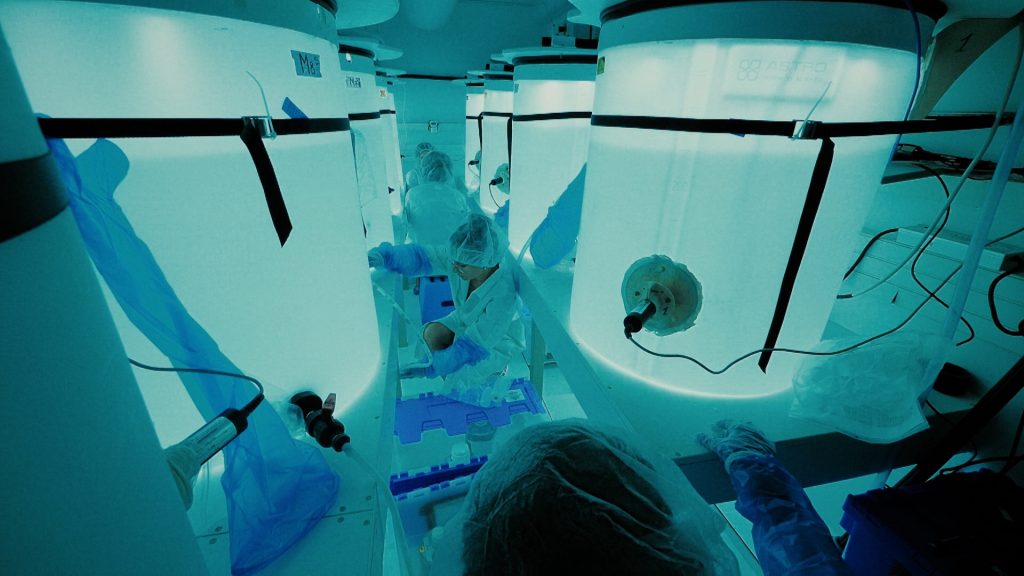
As part of the TONGA oceanographic campaign, samples are taken from the heart of the minicosm container. This ‘clean’ container is surrounded by a controlled bacteriological environment, protected from heat and natural light, and contains 8 large minicosms, 300-litre aquariums. In these reactors, seawater pumped from near the hydrothermal springs was mixed in different proportions with surface water. The aim of this experiment was to study the impact of hydrothermal springs on the composition and functioning of surface plankton communities. In other words, to observe how volcanic fluids affect their growth and metabolism, and thus quantify their impact on carbon flows.
Although these results represent a major advance in our understanding of the carbon cycle, they also underline the importance of continuing our efforts to reduce CO2 emissions and combat climate change. Although the ocean absorbs some of the CO2 we emit, it will probably not be able to do so indefinitely, and especially not without consequences for its own health.
Source : Sophie Bonnet et al., Natural iron fertilization by shallow hydrothermal sources fuels diazotroph blooms in the ocean. Science 380,812-817(2023). DOI:10.1126/science.abq4654 – https://www.science.org/doi/10.1126/science.abq4654
